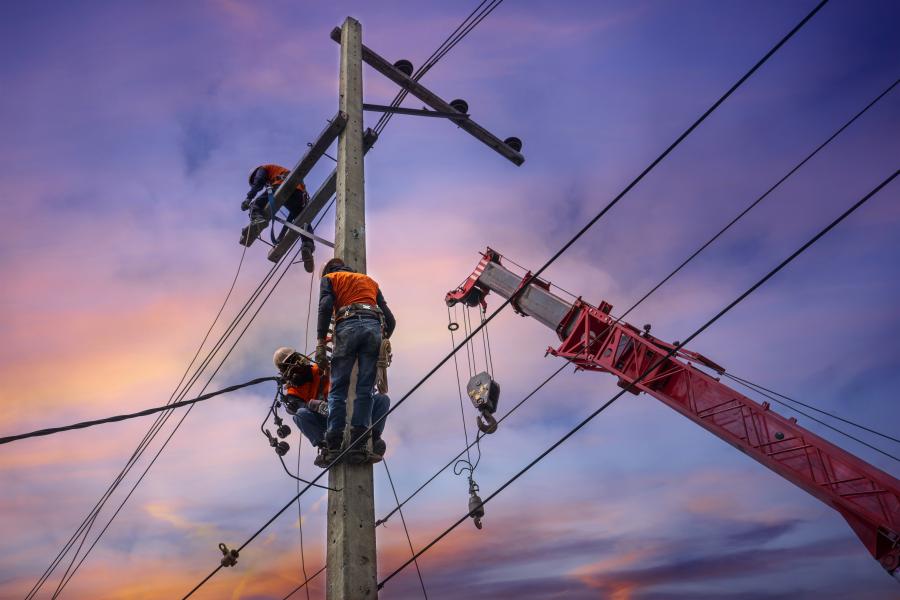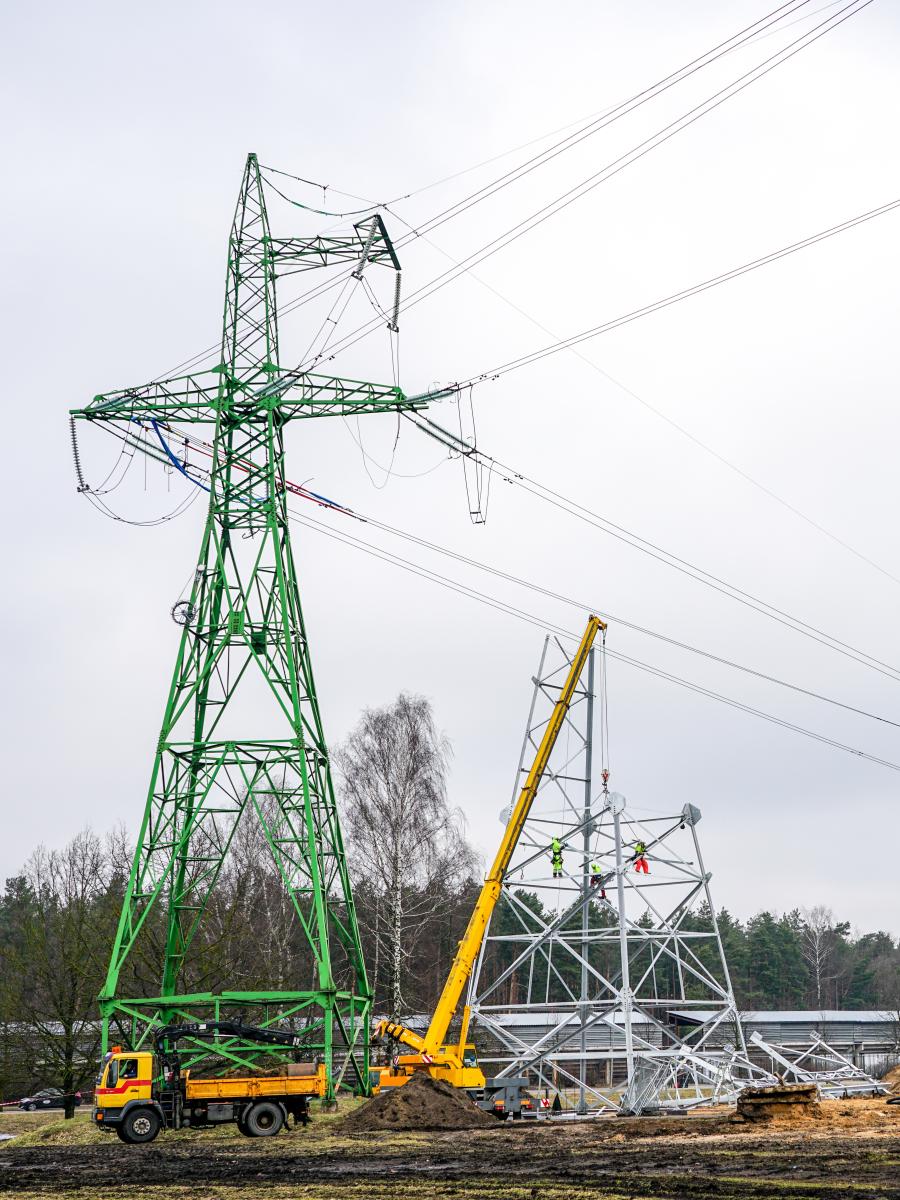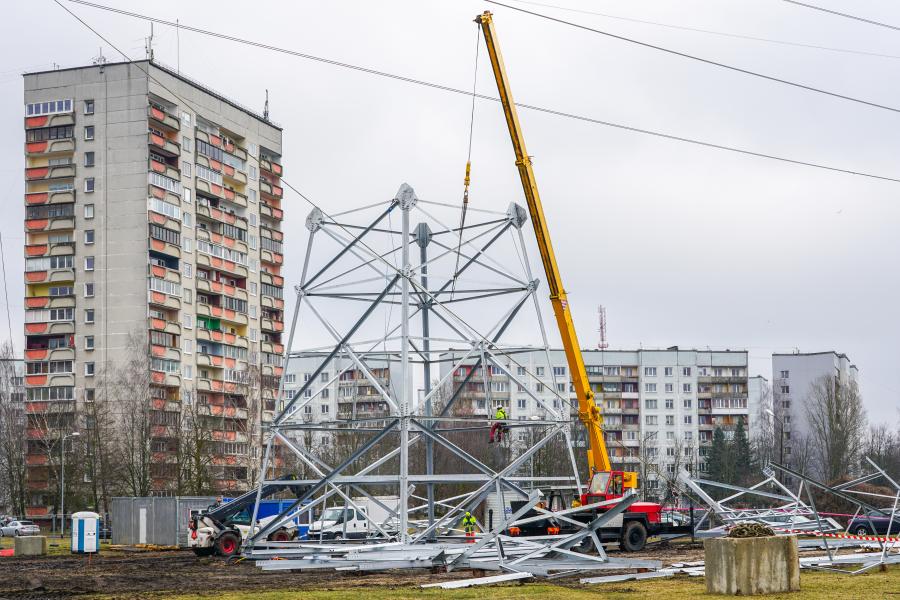Crew members working around power lines should have a thorough understanding of the pertinent OSHA regulations. The agency requires special precautions be taken when assembling/disassembling, operating and/or traveling with a crane near power lines.
Electrocutions resulting from contact between a crane and overhead power lines is still a leading cause of death on job sites. The key to safety around power lines is awareness, and an experienced operator knows to assume all lines are energized until he's confirmed otherwise.
Overhead power lines caused 36 percent of all electric-related fatalities in the workplace between 2011 and 2017, according to the Electrical Safety Foundation International.
Most fatalities occurred as a result of little to no electrical safety training, noted L&M Crane and Rigging, Freeport, N.Y.
"When the time comes for any project involving overhead power lines, it's crucial to choose an operator with job knowledge, job experience and extensive safety training," according to an L&M blog post on power line safety.
Hank Dutton, senior specialist in construction risk control of Travelers Insurance, New York City, talked about power line safety in a blog post on lift planning.
Dutton, who regularly conducts crane safety training, believes those working around power lines should have a thorough understanding of the pertinent OSHA regulations.
"OSHA requires special precautions be taken when assembling/disassembling, operating and/or traveling with a crane near power lines," he wrote.
Back to Basics
Bo Collier president of Crane Tech LLC, Brandon, Fla., said the requirements of working around power lines haven't changed in recent years.
It's frustrating that the crane industry still experiences accidents, injuries and deaths from cranes and equipment getting too close or coming in contact with power lines, he wrote.
Accidents and incidences "reinforce the need for continual education regarding workers in the vicinity of power lines," Collier said.
He noted two basic parts of safety for working around power lines, according to OSHA:
- Clearance distances — for cranes and the steps that must be taken to work near power lines; and
- Training — for those involved in crane operations and for personnel who are working on the site but are not directly involved with crane operations.
Billy Smith of Atlanta, Ga.-based construction insurance provider NBIS said that through electrocution, power lines have caused a third or more of all crane-related fatalities.
If the overhead power line hasn't been de-energized — and before you can begin operations — the operator must identify the work zone in one of two ways: Demarcate boundaries, with flags, a range-limit device or range-control warning device, prohibiting the equipment's operation past those boundaries. The other method is to define the work zone as the area 360 degrees around the equipment, up to the machine's maximum working radius.
"After determining the appropriate work zone, you must also determine if any part of the equipment could, at the equipment's maximum working radius, get closer than 20 feet to a power line within the determined work zone," said Smith.
"If not, you're good to go and no further action needs to be taken."
However, if equipment will get within 20 ft. of a power line, then you or the employer must meet the following requirements:
- Option 1: De-energize and ground. Confirm from the utility owner/operator that the power line has been de-energized and visibly grounded at the work site.
- Option 2: Maintain a 20-ft. clearance. "Ensure that no part of the equipment, load line or load including rigging and lifting accessories, gets closer than 20 feet to the power line" by implementing at least one of the measures specified by OSHA.
- Option 3: Table A clearance. Determine the line's voltage and the minimum clearance distance permitted under OSHA's Cranes & Derricks in Construction rule.
Determine if any part of the equipment, load line or load could get closer than the minimum clearance distance to the power line permitted.
If so, then the employer must follow the requirements to ensure that no part of the equipment, load line, or load gets closer to the line than the minimum clearance distance.
"If the worst-case scenario happens and contact is made between a crane and an energized line, the crane operator should stay inside the cab," said Smith.
He should "try to remove the crane from contact by moving it in the reverse direction."
And, if the crane cannot be moved away from contact, Smith said, the operator should stay inside the cab until the lines have been de-energized.
"All other personnel should keep away from the crane, ropes and load, since it's possible the ground around the crane could be energized," he adds.
As Smith said, there is a lot to think about when it comes to power line safety. He offers three takeaways:
- Any time it's possible, deenergize the power line.
- While power-line safety is indeed the responsibility of everyone on the job site, it's specifically the responsibility of the employer.
- Staying outside of the 20-ft. distance from an energized power line is a good general rule of thumb.
However, there are some instances where a crane should be even farther away.
Keeping Crews Safe
Employers have a responsibility to provide a safe workplace and protect workers against possible hazards, preaches OSHA.
In a video on power line safety, the agency's narrator said "training workers, pre-job planning and taking the right precautions save lives."
When proper precautions are in place, all workers are trained. That includes a certified crane operator and qualified rigger and signal person.
An employer must take steps to keep the crew and crane a safe distance from the power line.
The foreman must obtain the voltage of the overhead power line from the utility company. Based on that voltage, he determines the minimum required distance of the crane from the power line.
A pre-job safety planning meeting must be held. Flags should be set up to show the boundary that must not be crossed.
A non-conductive tag line must be used to control the movement of materials. A signal person or spotter should be onsite with a two-way radio to communicate with the operator.
Higher voltage lines will require greater minimum safe distances and additional precautions than those shown here.
As materials are moved, the boom must remain a safe distance from the power lines as the worker safely guides materials toward the ground.
"Not all worksites are the same, and the precautions could be different," noted the video's narrator.
Ask the Right Questions
Awareness on the part of a crane operator goes hand in hand with taking an active role in his or her safety and that of everyone else on the job site.
Bob Berry, former safety director of Sims Crane & Equipment, Tampa, Fla., wrote that when a crane operator arrives at a job site, his or her asking the right questions and communicating with others will help everyone be more prepared.
Questions, such as "Who is the lift director" and "What are their requirements for personal protection equipment, jobsite specific rules, moving with or without a spotter, and recognizing hazards," are crucial.
"Asking these questions is greatly more important than many may think," Berry, now a crane safety consultant of Haag Engineering, Ashville, N.C., wrote for Sims' crane safety blog.
"For example, say a job is going to require you to make a crane lift and place an item on the other side of an energized power line. You should ask, ‘Are we going to be going under the power lines or around the power lines?'"
Berry believes the next question needs to be, "Will I have a spotter for this crane lift?"
If the answer is no, and the lift is going to be in a place that you may have a difficult time seeing, "address the controlling entity and let them know you believe a spotter is needed," he said.
Guy Packard, vice president of electric operations of Consumers Energy, Jackson, Mich., offered five tips to help stay safe around overhead electric lines.
First, he said, survey your job site every day before work begins to locate electric lines, poles and guy wires. "Be alert for lines hidden by trees or buildings."
Second, have an emergency plan in place before beginning work near electric lines.
Third, know the distance rules for anyone working near power lines. In Michigan, workers must stay at least 10 ft. away, including any tools or equipment.
"Metal ladders, cranes and other specialized equipment require 20 feet of clearance. Be aware that even nonmetallic tools can conduct electricity," said Packard.
Fourth, be aware that trees can conduct electric current.
"Before moving a tree under a power line, look up and determine the overhead clearance from the top of the tree. Keep the right distance away," he said.
And finally, clearly mark boundaries with tape, signs or barricades to keep workers and equipment the required distance away. Also, use a spotter if needed.
In the event a crane contacts an electric line, Packard advised operators to:
- Stay in the vehicle until help arrives, if it is safe to do so.
- If you must exit the vehicle, jump off and land with feet together without touching the ground and the vehicle at the same time.
- Shuffle at least 20 ft. away with feet together.
- Call your local energy company immediately to report the issue.
But OSHA always has the last word on the subject. Said Smith of NBIS, "It's best to consult the OSHA rule for yourself."
"Be sure to spend a little time refreshing yourself on what you can and cannot do. You'll be happy you did," he added. CQ
This story also appears on Crane Equipment Guide.
Lucy Perry
Lucy Perry has 30 years of experience covering the U.S. construction industry. She has served as Editor of paving and lifting magazines, and has created content for many national and international construction trade publications. A native of Baton Rouge, Louisiana, she has a Journalism degree from Louisiana State University, and is an avid fan of all LSU sports. She resides in Kansas City, Missouri, with her husband, who has turned her into a major fan of the NFL Kansas City Chiefs. When she's not chasing after Lucy, their dachshund, Lucy likes to create mixed-media art.
Read more from Lucy Perry here.
Today's top stories

















